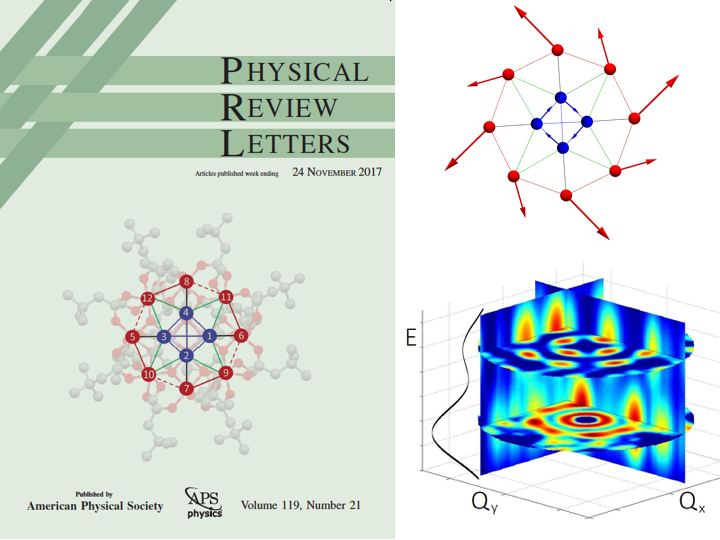However, the potential of complex magnetic molecules, in which the large total magnetic moment results from the mutual alignment of several individual spins, is still not fully explored, due to the difficulty in determining the microscopic interactions within the magnetic core. This strongly limits our knowledge of the mechanisms underlying the single-molecule magnet behavior of such systems, and hence our capability to design molecules with the desired behavior.
Mn12, consisting of a central core of 12 Mangane se ions surrounded by organic ligands, is the forefather of all molecular nanomagnets. In its ground state, the spins of the ions interact with each other and align to give the molecule a large magnetic moment. This alignment, or magnetization, is surprisingly stable, with a relaxation time of two months, but only at a temperature of 2 K.
However, more than 20 years since its discovery and despite hundreds of papers, there is still no unambiguous demonstration of the exchange interactions between the Mn ions that leads to the magnetic properties of this prototypical system.

|
(Top) Precession pattern of the individual Mn spins for one of the measured excitations. The arrows represent the 12 vectors describing the spatial pattern of the spins preceding around z. (Bottom) Scattering Scattering function of Mn12 measured on LET as a function of Qx, Qy, and E, and integrated over the full Qz range. "Magnetic Exchange Interactions in the Molecular Nanomagnet Mn12" A. Chiesa, T. Guidi, S. Carretta, S. Ansbro, G. A. Timco, I. Vitorica-Yrezabal, E. Garlatti, G. Amoretti, R. E. P. Winpenny, and P. Santini Phys. Rev. Lett. 119, 217202 (2017) DOI: 0.1103/PhysRevLett.11 9.217202
|
An international research team involving the University of Parma, the ISIS Neutron and Muon Source and the University of Manchester has exploited the power of four dimensional inelastic neutron scattering (4D-INS) to portray the spin precession patterns of the Mn spins during magnetic excitations. These are unambiguous fingerprints of the intra-molecular magnetic interactions and allowed the team to finally fix their value for the first time.
The power of this technique comes from the ability to measure the scattering cross-section over large portions of the energy-wavevector space, yielding a faithful portrait of spin fluctuations on the space- and time-scales characterizing the internal dynamics of the magnetic core. Tatiana Guidi from ISIS says, “What made this possible is the great capabilities of the LET time-of-flight spectrometer at ISIS, which employs a large position sensitive detector array and allows simultaneous data collection with multiple incident ene rgies. For the experiment the chemists in Manchester have grown and co-aligned an array of large high-quality single crystal of deuterated-Mn12 molecule. The theoretical modelling of the large amount of INS data has been very challenging and required the great expertise of the team of theoreticians at University of Parma."
Prof. Paolo Santini, from University of Parma says “Our study demonstrates the great amount of information that can be obtained by 4D-INS, making it an unrivalled tool to characterize molecular magnets. These results provide the starting point in understanding the properties of this important molecule, which have remained a mystery for more than 20 years."
For instance, the new findings will shed light into the details of the relaxation dynamics of Mn12 which should be influenced by the low-lying excited multiplets, partially overlapping with the ground one, leading to additional relaxation and tunneling pathways.
Further reading
Magnetic Exchange Interactions in the Molecular Nanomagnet Mn12 A. Chiesa, T. Guidi, S. Carretta, S. Ansbro, G. A. Timco, I. Vitorica-Yrezabal, E. Garlatti, G. Amoretti, R. E. P. Winpenny, and P. Santini Phys. Rev. Lett. 119, 217202 (2017) DOI: 0.1103/PhysRevLett.119.217202
See here for information on the LET instrument.
